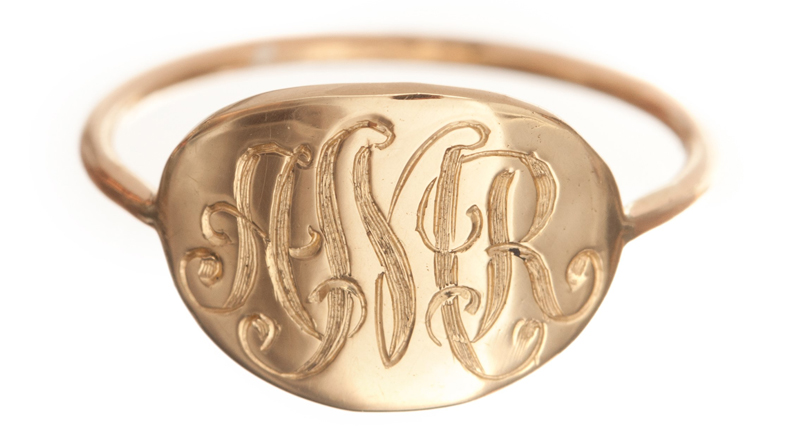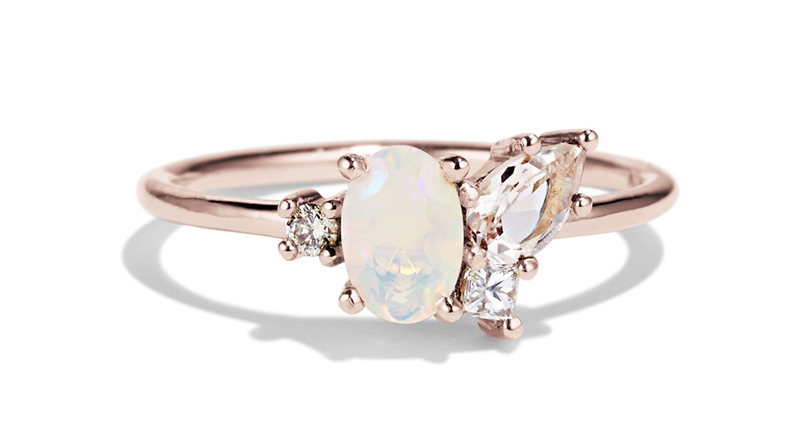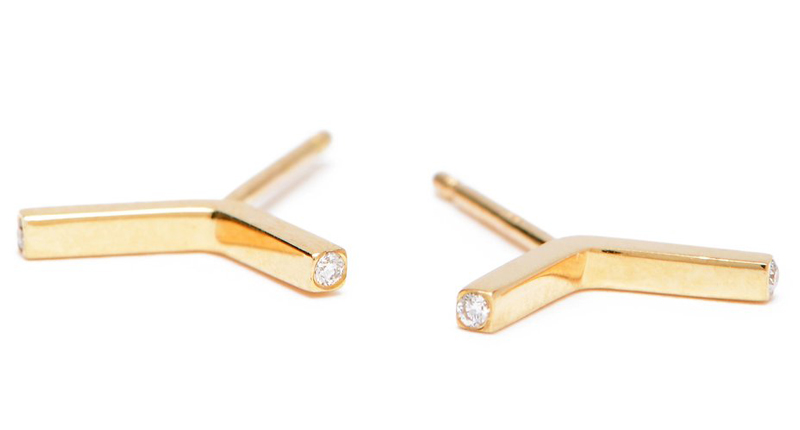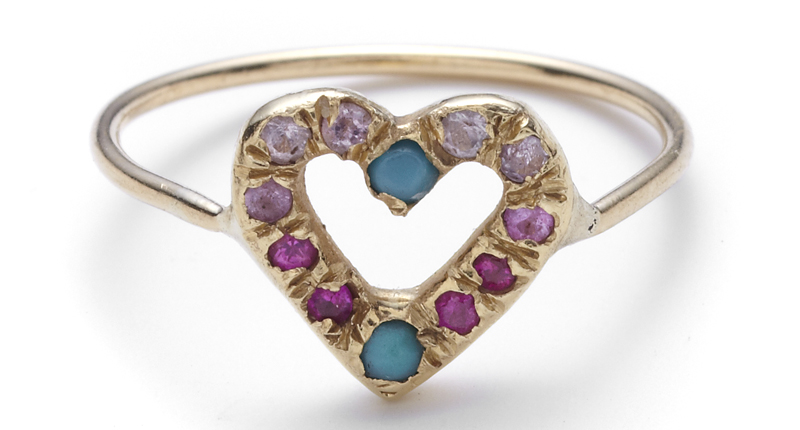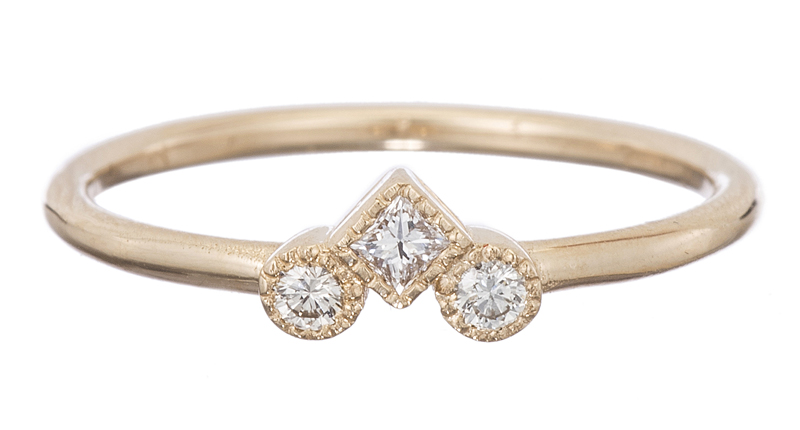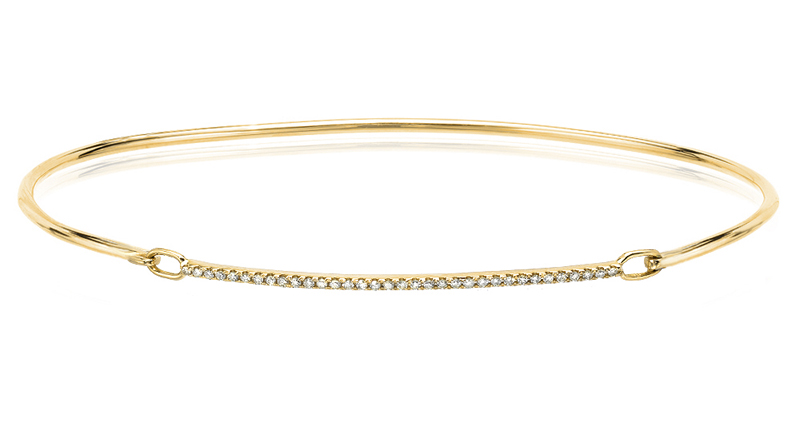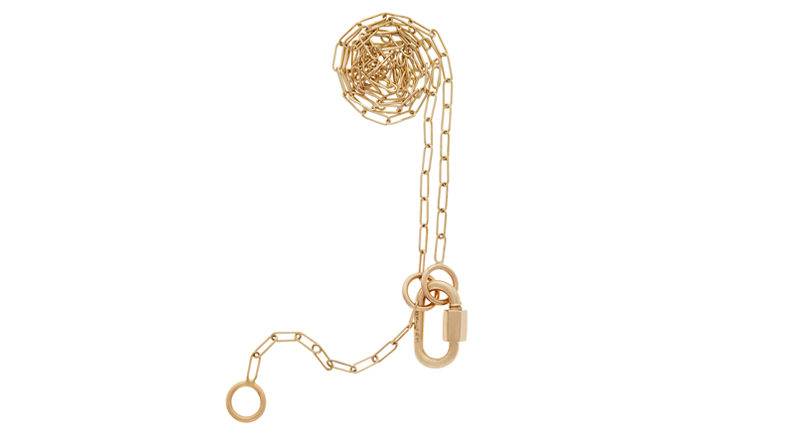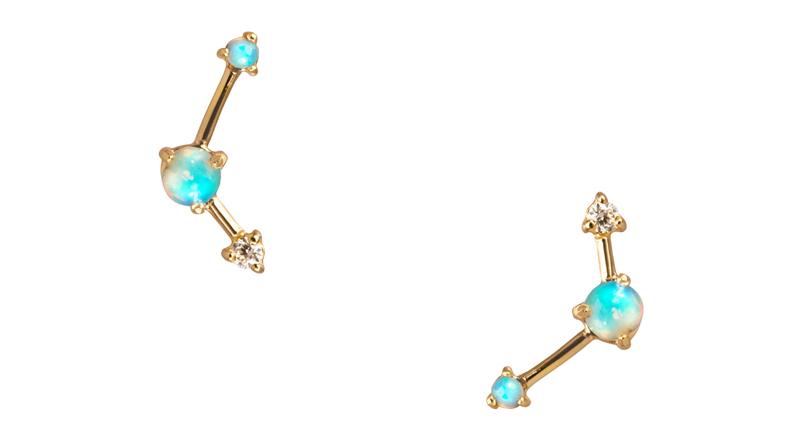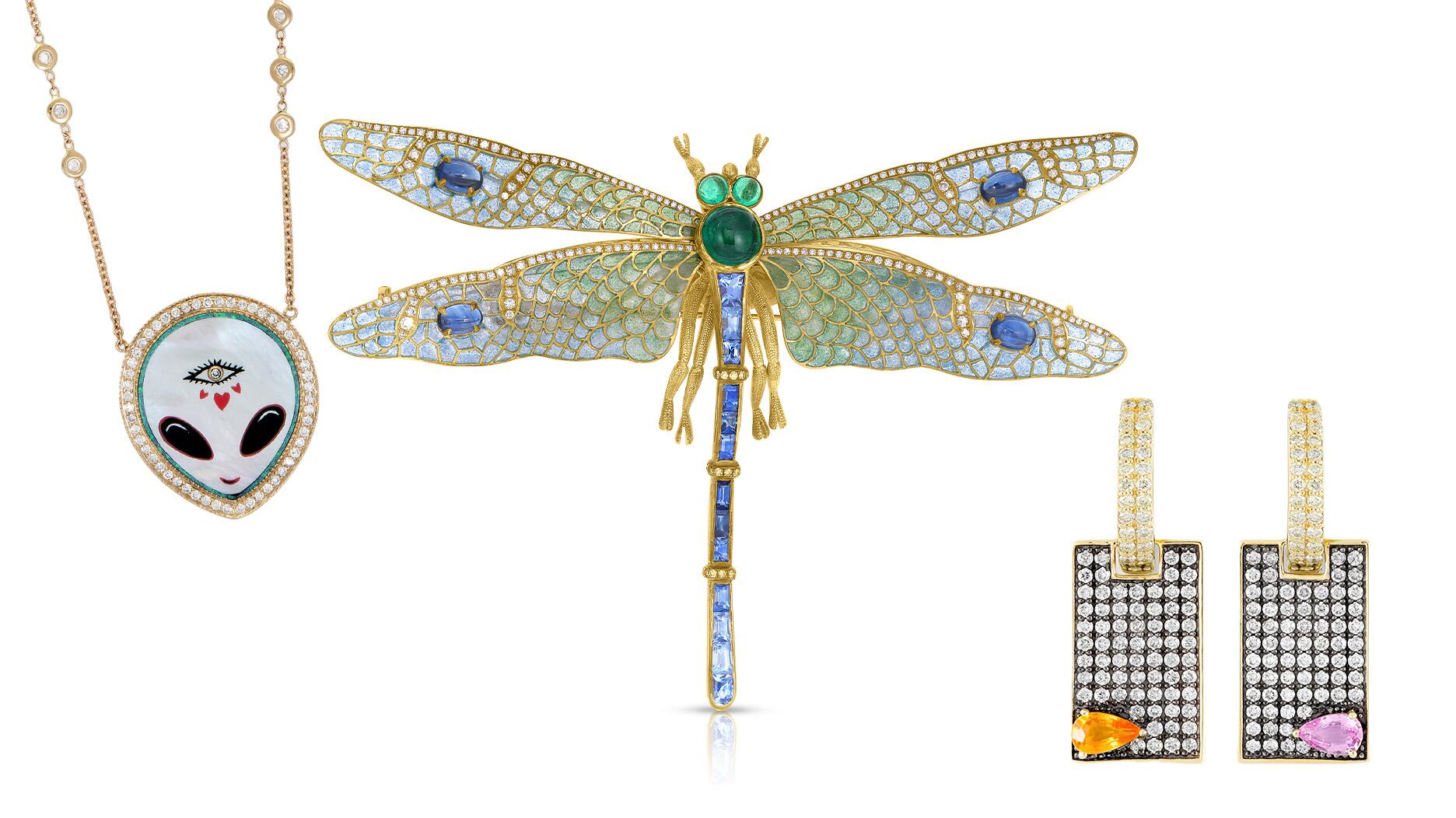The luxury goods company said founder Ippolita Rostagno will remain at the brand’s helm.
10 Jewels for the Self-Purchasing Female Consumer
Designed for women by women, meet a group of jewelry designers who are finding success by appealing to the customer who buys jewelry for herself.

New York--Two groups have risen concurrently in the fine jewelry industry over the past several years: the self-purchasing female customer and the female jewelry designer.
And their mutual ascent isn’t a coincidence.
“We don't necessarily target this consumer group, at least consciously,” jewelry designer Jennie Kwon said of the self-purchasing female consumer. “But I think it happens organically, as I myself am a self-purchasing woman and ultimately, my designs reflect what I think is beautiful and what I love to wear.”
Kwon said that self-purchasers make up the majority of her clientele, while designer Marla Aaron revealed that 95 percent of her customers are self-purchasing.
“I started the collection because there were pieces of jewelry that I wanted for myself and I couldn't find,” said Aaron, who has a made a name for herself with her unique fine jewelry locks combining precious metals with functional hardware.
“Jewelry is intimate and deeply personal, and it makes complete sense that women would like to reward themselves with pieces that they have especially chosen and that reflect who they are,” she explained.
There also are clear benefits in a consumer picking out a piece of jewelry according to their own specific taste: it eliminates the stress that comes with gifting, particularly at a luxury price point, and the letdown that comes with being on the receiving end of an unwanted present.
These are things many female designers have experienced from a consumer standpoint.
“I've always had a strong sense of what I love to wear in jewelry,” designer Elisa Solomon said. “My husband jokes that he can never buy me jewelry, and it really is true. I love that women know what they want and go for it.”
When consumers buy for themselves, it also significantly reduces the rate of return.
“I prefer for a purchase to be by a self-purchaser because it ensures that the customer will end up with a piece that they truly love,” designer Selin Kent confirmed.
Ann Ko, the designer of Liven Co. agreed, saying, “Satisfaction has a higher value than surprise.”
Female Buying Power
According to the United States Department of Labor’s “Women in the Labor Force in 2010” report, women made up 47 percent of the total American workforce that year.
With more women working than ever before, self-purchasing is on the rise.
In an article published last month on National Jeweler on the “midult”--Generation X females
“Satisfaction has a higher value than surprise.”--Ann Ko, Liven Co.Designer Priyanka Kedia of Ayva Jewelry agreed.
“(Women) are transforming the marketplace,” she said. “They are no longer waiting for their men or partners to buy them jewelry. They now buy jewelry as tangible evidence of their successes and as a reward for their hard work.”
Part of this consumer trend is due to the availability of fine jewelry at non-exorbitant price points.
Last month, Marty Hurwitz, CEO of MVI Marketing, told National Jeweler that the typical retail price range for jewelry self-purchasers was between $95 and $995, which aligned with the results of a survey National Jeweler and Jewelers of America conducted last year in which jewelers confirmed that outside of the bridal market, their average price per unit sold was under $1,000.
Delicate Jewelry
Attainability remains key in fueling the self-purchasing phenomenon, and the delicate jewelry trend has been instrumental in keeping costs low, proving itself a mainstay in the market.
Designer Wing Yau of fine jewelry brand Wwake has been a stand-out in the layering, delicate jewelry arena, carving out a distinct, minimalist aesthetic focused on tiny opals, diamonds and gemstones.
“It’s a new age of jewelry purchasing,” Yau said. “Our customers are independent and thoughtful--they’re not waiting for men to buy them nice things anymore. More than anything, they do it for themselves.”
Kwon’s jewelry also is of a delicate, stacking nature, with plenty of options that retail for under $1,000.
“We've found that the pricing and aesthetic of our pieces are at sort of a sweet spot for the self-purchasing woman,” she said. “The unique-yet-wearable design of our pieces, as well as the luxurious feel of them despite their somewhat dainty scale, really resonates with this particular demographic.”
Brands today are relying on the exact opposite mentality of the “keep-it-in-the-safe” attitude of generations past, creating pieces that function as an effortless uniform, appropriate to wear in any situation.
“Everyday, flexible pieces are a priority for busy modern women,” Ko emphasized. “A fine piece that goes with everything, can be dressed up or down, and still offers great style is worth buying.”
A Cultural Shift
As more women and men delay marriage or put it off altogether, several designers stressed that fine jewelry no longer needs to be a purchase relegated to engagements and anniversaries, saying that instead, women are marking any number of life events with a self-purchase.
“Our core customer is a self-purchasing woman who buys herself jewelry in honor of her own milestones--usually little earrings or rings that they can wear every day as a sweet reminder of their achievements,” Yau said.
Meanwhile Page Neal, the co-founder and one half of the design duo behind fine jewelry brand Bario Neal, is looking far beyond her brand's bridal customer, hoping to engage with their audience through all aspects of life.
“We believe that our lives are rich with experiences of all kinds: triumphs and sadness and joy,” Neal said. “Monumental events and rites of passage that invoke our humanity are not limited to engagements, weddings and anniversaries. Jewelry has the power to mark these moments with a reminder that you can both wear throughout your life and pass on later as a token of strength, resilience and fortitude. This is the time to treat and celebrate yourself.”
“It’s a new age of jewelry purchasing. Our customers are independent and thoughtful--they’re not waiting for men to buy them nice things anymore." -- Wing Yau, WwakeDesigner Ariel Gordon also feels that fine jewelry is the ideal product to sate the self-purchasing need for an ever-evolving consumer.
“There is a new, more mindful shopper who places a premium on products that offer craftsmanship, usefulness and versatility,” she said.
But Ayva Jewelry’s Kedia adheres to an even more democratic philosophy when it comes to buying oneself jewelry.
“The best part about self-purchasing is that you don’t need a reason to treat yourself,” she said.
Connecting with the Female Self-Purchaser
When asked how brands were directly targeting the self-purchaser, designers’ answers all had something in common: an emphasis on social media.
“On Bario Neal social media, we have a weekly post titled ‘More to Celebrate,’” said Bario Neal's Manager and Design Administrator Sarah Maltais. “Our hashtag #moretocelebrate is our call to remember that rites of passage extend beyond weddings, engagements, and anniversaries. We think we should honor our own personal struggles and accomplishments.
“We engage our customers with the question, what do you want to celebrate? And what ring stack would you choose as a physical reminder? (Examples of) past customer commemorations have included finishing graduate school, submitting a first film to a festival, paying off consumer debt, quitting a job to travel and write, finishing a dissertation and PhD program, and buying a first house,” she said.
Brands specifically noted the visual appeal of Instagram and how showing their jewelry worn or photographed in an aesthetically pleasing way helped customers relate to the product.
“We use inspiring images and realistic photographs on Instagram to ensure that our brand is both relatable and accessible,” Yau said. “My goal is to be with our customers every step of the way.”
Ultimately, independent female designers have the direct advantage of understanding the self-purchasing demographic because they are a part of it.
Kent emphasized, “My collection is not only designed by a woman for woman, but inspired by them.”
The Latest

Laura Burdese, who joined the Italian luxury brand in 2022, will take on the role in July.

The National Jeweler editors revisit the most noteworthy industry happenings and design trends from 2025.

How Jewelers of America’s 20 Under 40 are leading to ensure a brighter future for the jewelry industry.

Need a gift for the cat lover who has everything? Look no further than our latest Piece of the Week.


It purchased the “Grosse Pièce,” an ultra-complicated Audemars Piguet pocket watch from the ‘20s, for a record-breaking price at Sotheby’s.

The lab-grown diamond grower now offers custom engagement and fashion jewelry through its Kira Custom Lab Jewelry service.

Roseco’s 704-page catalog showcases new lab-grown diamonds, findings, tools & more—available in print or interactive digital editions.

Chandler got his start at Michelson Jewelers and has served as DCA president and CEO since 2001. He will retire at the end of the month.

The boutique is slated to open this week inside Terminal 8, offering pre-owned Rolex watches and more to international travelers.

Sponsored by Digital Monitoring Products

The special-edition egg pendant ingested in a New Zealand jewelry store was recovered after a six-day wait.

Associate Editor Natalie Francisco plays favorites with Piece of the Week, selecting a standout piece of jewelry from each month of 2025.

The “Love and Desire” campaign is inspired by the magic that follows when one’s heart leads the way, said the brand.

Two awardees will receive free tuition for an educational course at the Swiss lab, with flights and lodging included.

Berta de Pablos-Barbier will replace Alexander Lacik at the start of January, two months earlier than expected.

Sotheby’s held its first two jewelry sales at the Breuer building last week, and they totaled nearly $44 million.

Winners will receive free registration and lodging for its fourth annual event in Detroit.

Here are six ideas for making more engaging content for Instagram Reels and TikTok, courtesy of Duvall O’Steen and Jen Cullen Williams.

The honorees include a notable jewelry brand, an industry veteran, and an independent retailer.

Carlos Jose Hernandez and Joshua Zuazo were sentenced to life without the possibility of parole in the 2024 murder of Hussein “Sam” Murray.

Yood will serve alongside Eduard Stefanescu, the sustainability manager for C.Hafner, a precious metals refiner in Germany.

The New Orleans jeweler is also hosting pop-up jewelry boutiques in New York City and Dallas.

Set in a Tiffany & Co. necklace, it sold for $4.2 million, the highest price and price per carat paid for a Paraíba tourmaline at auction.

The jeweler’s “Deep Freeze” display showcases its iconic jewelry designs frozen in a vintage icebox.

Take luxury gifting to new heights this holiday season with the jeweler’s showstopping 12-carat sphene ring.

This year's theme is “Unveiling the Depths of the Ocean.”











